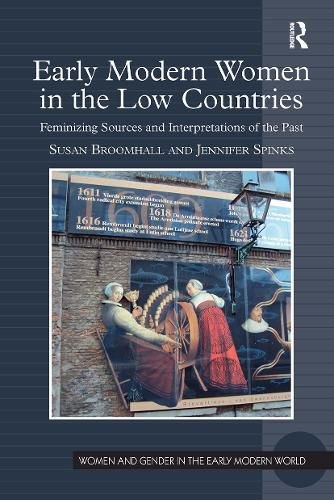Readings Newsletter
Become a Readings Member to make your shopping experience even easier.
Sign in or sign up for free!
You’re not far away from qualifying for FREE standard shipping within Australia
You’ve qualified for FREE standard shipping within Australia
The cart is loading…






Combining historical, historiographical, museological, and touristic analysis, this study investigates how late medieval and early modern women of the Low Countries expressed themselves through texts, art, architecture and material objects, how they were represented by contemporaries, and how they have been interpreted in modern academic and popular contexts. Broomhall and Spinks analyse late medieval and early modern women's opportunities to narrate their experiences and ideas, as well as the processes that have shaped their representation in the heritage and cultural tourism of the Netherlands and Belgium today. The authors study female-authored objects such as familial and political letters, dolls' houses, account books; visual sources, funeral monuments, and buildings commissioned by female patrons; and further artworks as well as heritage sites, streetscapes, souvenirs and clothing with gendered historical resonances. Employing an innovative range of materials from written sources to artworks, material objects, heritage sites and urban precincts, the authors argue that interpretations of late medieval and early modern women's experiences by historians and art scholars interact with presentations by cultural and heritage tourism providers in significant ways that deserve closer interrogation by feminist researchers.
$9.00 standard shipping within Australia
FREE standard shipping within Australia for orders over $100.00
Express & International shipping calculated at checkout
Combining historical, historiographical, museological, and touristic analysis, this study investigates how late medieval and early modern women of the Low Countries expressed themselves through texts, art, architecture and material objects, how they were represented by contemporaries, and how they have been interpreted in modern academic and popular contexts. Broomhall and Spinks analyse late medieval and early modern women's opportunities to narrate their experiences and ideas, as well as the processes that have shaped their representation in the heritage and cultural tourism of the Netherlands and Belgium today. The authors study female-authored objects such as familial and political letters, dolls' houses, account books; visual sources, funeral monuments, and buildings commissioned by female patrons; and further artworks as well as heritage sites, streetscapes, souvenirs and clothing with gendered historical resonances. Employing an innovative range of materials from written sources to artworks, material objects, heritage sites and urban precincts, the authors argue that interpretations of late medieval and early modern women's experiences by historians and art scholars interact with presentations by cultural and heritage tourism providers in significant ways that deserve closer interrogation by feminist researchers.